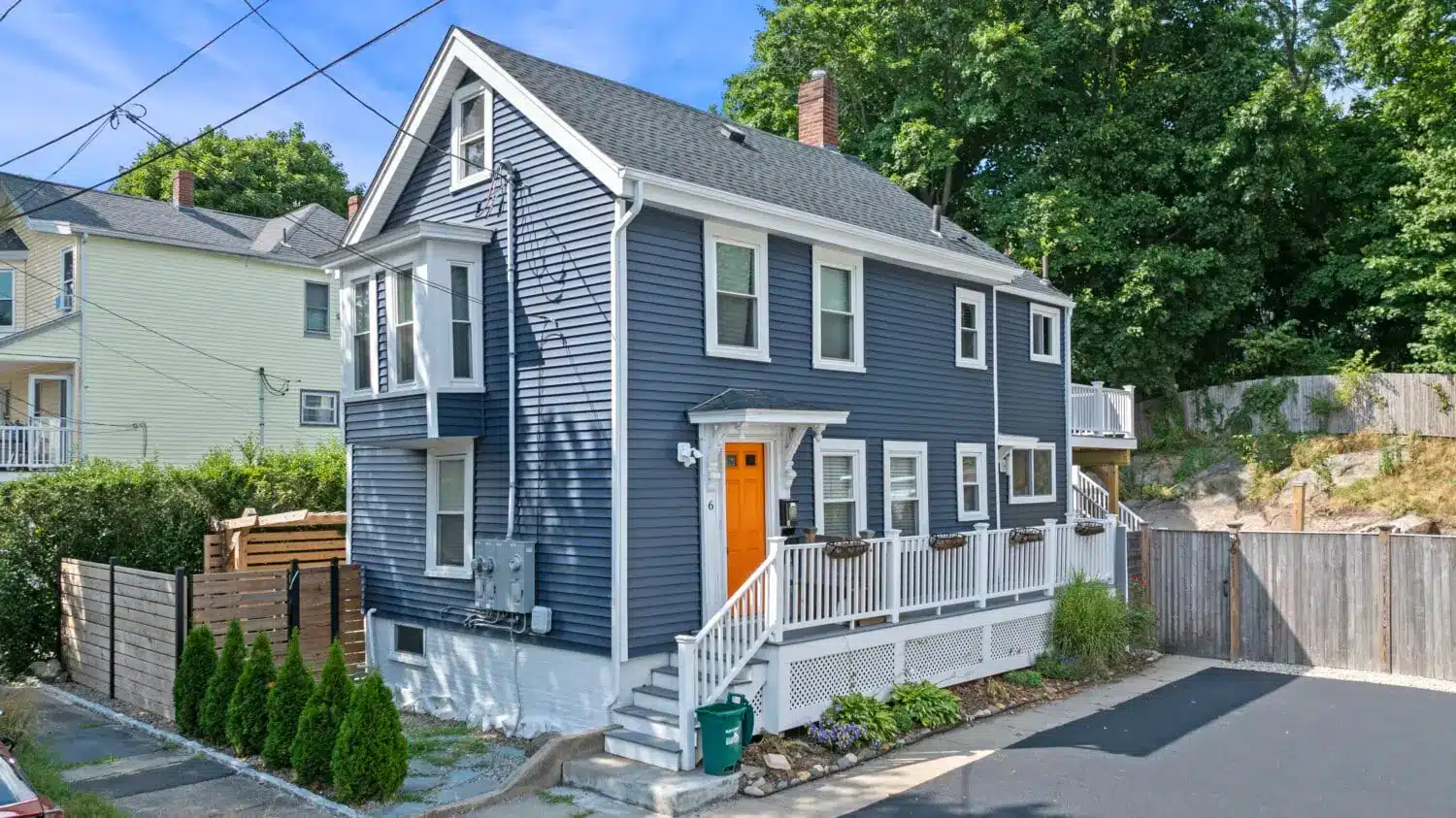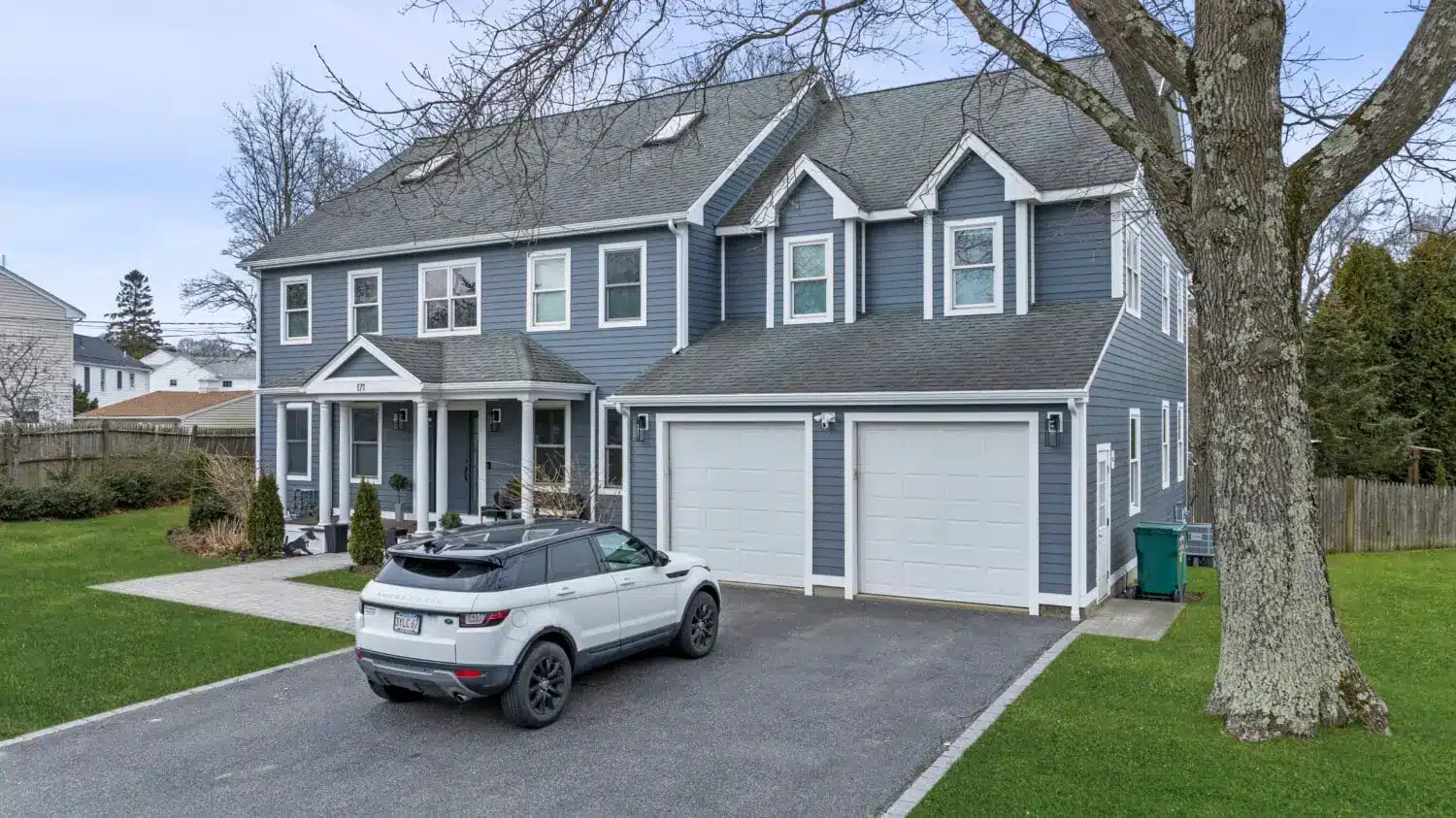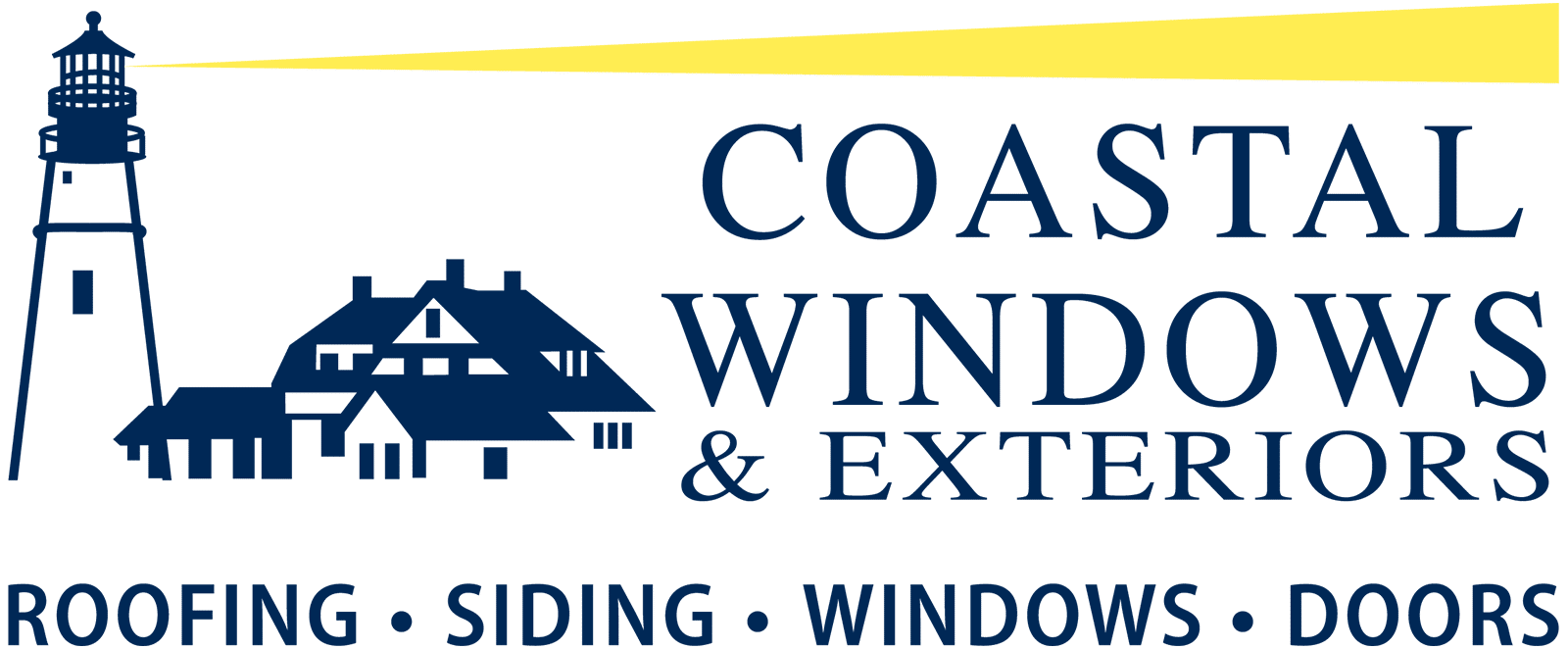Have you ever considered how much energy your home might be losing through its exterior walls? Living in New England, it’s more important than ever to choose energy efficient siding for year-round indoor comfort.
But if you’ve noticed fluctuating temperatures or higher-than-usual energy bills, your old and outdated siding is due for an upgrade.
But when it comes to energy efficient siding, what product performs the best? Let’s take a look at the top siding options for New England homes.
Energy-Efficient Siding: Stay Cozy with Insulated Vinyl Siding

Are you concerned about keeping your home comfortable year-round? It might surprise you that inefficient siding can cause up to 30% of your home’s energy to be lost. Yikes!
But there’s good news! Energy savings is where insulated foam-back vinyl siding, such as CraneBoard® Solid Core Siding®, becomes a game-changer.
How Insulated Vinyl Siding Offers Superior Insulation
Need energy efficient siding for your New England home? You’re in luck. Solid Core Siding® integrates advanced technology to combat energy loss, providing:
- An R-value that’s up to 19% higher than standard EPS foam siding, maximizing energy retention
- Continuous insulation that reduces heat loss through studs, a common cause of thermal bridging
- Stability in varying weather, ensuring you retain heat during colder months and stay cool in the summer
Vinyl siding’s energy-efficient vinyl siding performance doesn’t stop at insulation. It also comes in a variety of colors, such as Espresso, Lighthouse Red, Slate, Indigo, Smoky Ash, and Metropolitan Gray, allowing you to enhance both your curb appeal and energy savings.
Whether you prefer smooth finishes or wood-like textures, vinyl offers plenty of customization options in board and batten, clapboard, and shake styles.
Energy Efficient Vinyl Siding Styles that You’ll Love
Looking for some inspiration to make over your home with energy efficient vinyl siding? See some of our beautiful siding installation upgrades throughout New England:
- Vinyl siding installation in Hampton, NH
- Vinyl siding replacement in Plymouth, MA
- Vinyl house siding in Beverly, MA
- Vinyl siding replacement in Ashland, MA
See a siding style that strikes your fancy? Contact Coastal Windows & Exteriors today for a free estimate!
How James Hardie Siding Saves You Energy
Did you know that James Hardie is specifically engineered for New England’s climate? It’s true. When it comes to energy efficient siding, James Hardie fiber cement siding takes durability and moisture protection to a new level.
Insulating Thermal Protection with James Hardie
James Hardie’s innovative technology—particularly the Hardie® Weather Barrier—creates an airtight seal that prevents drafts and air infiltration. Here’s why this matters:
- Hardie®Wrap acts as a continuous barrier, reducing energy loss down to the wood studs
- Year-round moisture barrier saves you money during both winter and summer months
- Enhanced air tightness for better comfort, minimizing drafts and hot spots in your home
James Hardie goes beyond by offering comprehensive protection against energy loss through walls, helping you create an energy efficient house siding solution that works through all seasons.

Durability and Weather Resistance: Vinyl vs. James Hardie
How often do you think about the durability of your siding when considering energy efficiency? Beyond energy savings, you need a siding material that can withstand the wild ride of New England’s weather. Both foam-back vinyl siding and James Hardie siding offer impressive durability, but their performance differs slightly.
Vinyl Siding’s Durability
Foam-back energy-efficient vinyl siding offers excellent insulation in addition to:
- Resistance to impact damage, making it more durable than traditional vinyl siding
- Protection against extreme weather conditions, such as strong winds and storms
- Low maintenance, with no need for frequent repairs or repainting
However, James Hardie’s fiber cement also offers incredible performance for New England’s weather, offering long-lasting protection against the elements. This is especially true in terms of durability.
James Hardie’s Superior Durability
James Hardie fiber cement siding has been engineered to withstand the harshest climates and conditions. Its HardieZone System ensures that every home, no matter its location, receives siding specifically designed for its weather patterns. Here’s how:
- Resistance to cracking, warping, and swelling, ensuring that your siding remains strong even in extreme weather
- Fire-resistant properties, adding an extra layer of safety for your home. Hardie
- Minimal upkeep, with periodic cleaning and minimal painting required for long-lasting performance
While both siding options are highly durable, James Hardie fiber cement siding’s specific engineering for home siding installer projects in regions like New England makes it a top choice for homeowners looking for the most resilient material.
Why Composite Siding Isn’t as Efficient
Ever heard of composite siding vs vinyl siding comparisons? While vinyl and James Hardie offer superior energy efficiency, composite options such as Everlast advanced composite siding fall short. Though composite siding claims durability, it lacks the advanced insulation technology that foam-back vinyl and James Hardie provide.
How Composite Siding Falls Behind
- Lower R-value insulation, meaning less effective heat retention
- Higher susceptibility to warping and damage over time compared to fiber cement and vinyl
- Fewer design and color options, limiting curb appeal customization
For homeowners serious about energy efficient siding, investing in vinyl or James Hardie ensures a better return on investment through improved insulation, lower energy bills, and long-lasting performance.
Energy Efficient Siding Aesthetics and Curb Appeal
When it comes to choosing the most energy efficient siding, looks matter just as much as performance. Both foam-back vinyl siding and James Hardie offer a wide variety of aesthetic options, but they cater to different styles and tastes.
Vinyl Siding Aesthetic Versatility
Vinyl siding, especially insulated foam-back varieties, offers a significant amount of design flexibility. Do you want your home to stand out in the neighborhood with vibrant color and texture options? Vinyl provides:
- Popular New England styles, such as board and batten, clapboard, and shake
- A vast selection of colors, from earthy tones like Smoky Ash to bold shades like Indigo and Slate
- Customization of finishes, with both smooth and wood-like grains available
For homeowners who value visual variety, vinyl siding installation offers countless ways to upgrade your home’s curb appeal while still retaining energy efficiency.
James Hardie’s New England Charm
On the other hand, James Hardie siding, known for its fiber cement composition, provides an unmistakably classic look that’s particularly suited to homes in New England. Whether you live in Southern Maine, New Hampshire, or North Shore Boston, Hardie siding complements your region’s architectural style with elegance.
Options include:
- Hardie® Panel Vertical Siding & Trim Batten Boards, which deliver a contemporary farmhouse look with sleek, crisp lines
- Hardie® Plank, a popular choice that offers versatile cladding options to elevate your curb appeal
- Hardie® Shingle, ideal for coastal homes, recreating the look of wood shingles while resisting rot, curling, and warping
With its robust visual appeal, James Hardie siding ensures your home looks its best while also enhancing energy efficiency.
James Hardie Siding Inspiration for Your Home
Trying to decide if Hardie® is the right siding for you? Take a look at some of these local New England homes that upgraded to James Hardie® siding, complete with a weather barrier to add durability and prevent moisture damage.
- James Hardie installation in Beverly, MA
- James Hardie siding in Newburyport, MA
- James Hardie contractor in York, ME
- James Hardie shingle shake siding in Danvers, MA
Wondering what Hardie® will look like on your own home? Ask us about our FREE 3D preview, where you can see how your exact home will look with Hardie® with your free estimate.
Is Your Old Siding Losing Energy? Check for These Signs
What are the signs that your home’s siding might be losing energy? Keep an eye out for the following red flags:
Higher Energy Bills
A sudden spike in your energy costs can signal that your siding isn’t insulating your home effectively anymore. Poor insulation allows heat to escape, forcing your HVAC system to work harder and drive up your bills. This is especially true if your home has old wood siding with loose panels or showing signs of rot.
Drafts Around Windows and Doors
If you feel drafts near your windows and doors, it’s likely that your siding is no longer providing a proper barrier against air infiltration. Gaps or warping in old siding can let outside air in, causing discomfort inside.
Fading or Peeling Paint
When siding loses its ability to shield your home from the elements, moisture can seep through, leading to paint peeling or fading. This not only affects your home’s curb appeal but can also allow more energy to escape.
Warped or Cracked Siding
Visible warping or cracks in your siding suggest that the material is breaking down, creating gaps where heat can escape. Damaged siding not only looks unsightly but it also reduces your home’s energy efficiency.
Moisture Inside the Home
If you’ve noticed dampness or mold inside, your siding may no longer be protecting your home from moisture infiltration. Excess moisture can compromise insulation, allowing more heat loss and contributing to higher energy bills.
Free Estimate: Energy Efficient Siding for New England Homes
Experience a new level of beautiful curb appeal and indoor comfort with siding installation from Coastal Windows & Exteriors. As New England’s #1 woman-owned siding company (INC 5000), our glowing Google reviews and customer testimonials showcase our commitment to your satisfaction. Contact us today for a free quote!


